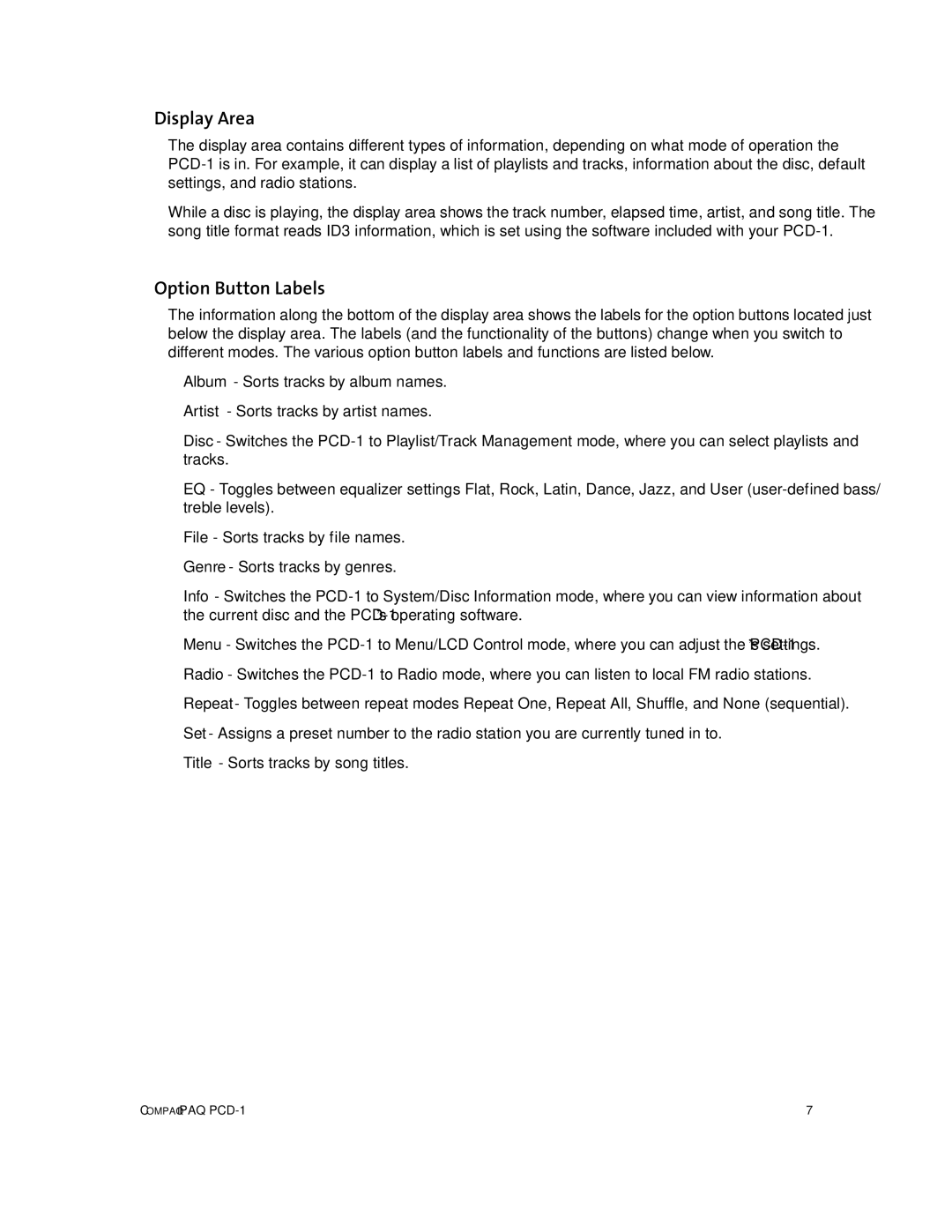PCD-1 specifications
The Compaq PCD-1, launched in the early 1990s, marked a significant milestone in the evolution of portable computing. As one of the first truly portable PCs, it combined innovative design with practical features that appealed to a wide range of users, from business professionals to tech enthusiasts.One of the standout features of the Compaq PCD-1 was its lightweight design. Weighing approximately 3.5 pounds, the PCD-1 was remarkably portable for its time, offering users the ability to take their work on the go without the burden of a heavier machine. Its compact size allowed it to fit easily into a briefcase, making it ideal for business travel and mobile computing.
The PCD-1 was powered by an Intel 80386 processor, which provided solid performance for various tasks. This CPU was paired with a maximum of 4MB of RAM, enabling users to run essential applications smoothly. The system supported a variety of storage options, including a 40MB hard drive and the potential for external floppy disk drives, catering to the evolving needs for data storage and transfer.
In terms of display technology, the Compaq PCD-1 featured a 9-inch LCD screen with a resolution of 640x200 pixels, providing a decent viewing experience for productivity tasks and basic graphics. The keyboard was designed for comfort and ease of use, with an integrated layout that included function keys, making it user-friendly for typing and navigation.
Connectivity was another important aspect of the PCD-1. The machine included a range of ports, such as serial and parallel connectors, allowing users to connect peripherals like printers and external modems. This versatility extended the usability of the device beyond simple computing tasks.
In addition to its hardware advantages, the Compaq PCD-1 ran on MS-DOS operating system, providing users with a familiar environment for software applications common during that time. The combination of portability, solid processing power, and multifaceted connectivity made the PCD-1 a popular choice in the burgeoning laptop market.
Overall, the Compaq PCD-1 represented a pivotal moment in personal computing, offering a blend of innovative design, essential features, and capable performance that set the stage for future advancements in the field of portable computing. Its legacy can still be seen in the sleek, efficient laptops that dominate today’s market.
